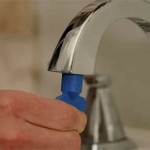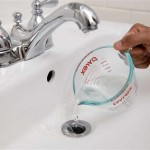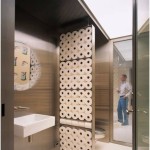How To Convert a Dresser Into a Bathroom Vanity
Repurposing furniture offers a cost-effective and creative way to personalize a home. Converting a dresser into a bathroom vanity is a popular DIY project that combines functionality with aesthetic appeal. This article provides a comprehensive guide on how to transform a dresser into a stylish and practical bathroom vanity.
Planning and Preparation
Before embarking on the conversion, careful planning is crucial for a successful outcome. This involves assessing the existing bathroom space, selecting the appropriate dresser, and gathering the necessary tools and materials.
Assessing Bathroom Space: The first step is to measure the available space in the bathroom. Note the width, depth, and height limitations to ensure the chosen dresser fits comfortably. Consider the placement of existing plumbing, including the location of water supply lines and drainpipes. This will influence the placement of the sink and faucet, and consequently, the modifications needed to the dresser.
Choosing the Right Dresser: Selecting the right dresser is paramount. Look for a dresser that is made of solid wood or a durable material that can withstand moisture. Avoid dressers made of particleboard or MDF, as these materials are prone to water damage. The dresser's style should complement the overall bathroom aesthetic. Consider the height of the dresser; standard bathroom vanities typically range from 30 to 36 inches in height. If the dresser is too short, it may be necessary to add legs or a base to raise it to the desired height. If it's too tall, you will have to remove some of the height from the top or legs.
Gathering Tools and Materials: A well-equipped workspace is essential. The following tools and materials are typically required:
- Measuring tape
- Pencil
- Safety glasses
- Dust mask
- Circular saw or jigsaw
- Drill with various drill bits
- Hole saw (sized for drainpipe)
- Sander or sandpaper (various grits)
- Primer
- Paint or stain (suitable for bathroom environment)
- Paintbrushes or rollers
- Polyurethane sealant (waterproof)
- Plumbing tools (pipe wrench, Teflon tape, etc.)
- New sink and faucet
- Drain assembly
- Supply lines
- P-trap
- Wood screws
- Construction adhesive
- Caulk (mildew-resistant)
- Level
Modifying the Dresser
The next phase involves modifying the dresser to accommodate the sink and plumbing. This requires precise measurements and careful cutting to ensure a proper fit.
Preparing the Dresser Surface: Begin by removing all drawers and hardware from the dresser. Thoroughly clean the dresser surface to remove any dirt, dust, or grease. Sand the surface to create a smooth base for painting or staining. Start with a coarse grit sandpaper (e.g., 80-grit) and gradually move to finer grits (e.g., 120-grit, 220-grit) for a polished finish. Wipe away any sanding dust with a tack cloth.
Cutting the Sink Hole: Place the sink on top of the dresser in the desired location. Trace the outline of the sink using a pencil. Consult the sink manufacturer's instructions for the exact dimensions of the cutout. Use a jigsaw to carefully cut out the hole, staying within the traced line. Ensure the edges are smooth to prevent splintering.
Creating Space for Plumbing: Identify the location of the water supply lines and drainpipe. Using a drill and hole saw, create access holes in the back or bottom of the dresser to accommodate these plumbing components. The size of the holes should be slightly larger than the diameter of the pipes to allow for easy installation and adjustments.
Reinforcing the Structure: The cutout for the sink can weaken the structural integrity of the dresser. Reinforce the area around the sink hole by attaching wood supports to the underside of the top surface. Use construction adhesive and wood screws to secure the supports. Inside the drawers you can also cut around plumbing as needed. This will allow for storage still but to also accomodate plumbing.
Finishing and Sealing
Protecting the modified dresser from moisture is crucial for longevity. Proper finishing and sealing will prevent water damage and maintain the aesthetic appeal of the vanity.
Priming and Painting or Staining: Apply a coat of primer to the entire dresser surface. Primer helps to seal the wood and provides a better surface for paint or stain to adhere to. Allow the primer to dry completely according to the manufacturer's instructions. Once the primer is dry, apply two or more coats of paint or stain, allowing each coat to dry thoroughly before applying the next. Choose a paint or stain that is specifically designed for use in bathrooms, as these products are typically moisture-resistant and mildew-resistant.
Applying Polyurethane Sealant: After the paint or stain is completely dry, apply several coats of polyurethane sealant to the entire dresser surface, including the inside of the sink hole and any other exposed wood. Polyurethane sealant provides a waterproof barrier that protects the wood from moisture and prevents warping or rotting. Allow each coat of sealant to dry completely before applying the next. Follow the manufacturer's instructions for application and drying times.
Installing the Sink and Faucet: Carefully place the sink into the cutout, ensuring it fits snugly. Apply a bead of caulk around the edge of the sink where it meets the dresser surface to create a watertight seal. Install the faucet according to the manufacturer's instructions. Connect the drain assembly to the sink drain and tighten securely.
Plumbing Connections
Connecting the plumbing is a critical step that requires attention to detail and adherence to local plumbing codes. If unfamiliar with plumbing, consider consulting a qualified plumber.
Connecting Water Supply Lines: Connect the water supply lines to the faucet, ensuring the hot and cold water lines are connected correctly. Use Teflon tape to seal the threads of the fittings and prevent leaks. Tighten the connections securely with a pipe wrench, but avoid overtightening, which can damage the fittings.
Connecting the Drainpipe: Connect the drainpipe to the drain assembly. Install a P-trap to prevent sewer gases from entering the bathroom. Ensure all connections are tight and secure. Check for leaks by running water through the sink and inspecting the connections for any signs of water leakage. Tighten any leaking connections as needed.
Securing the Vanity: Position the dresser vanity in its final location. Use a level to ensure the vanity is level. If necessary, shim the vanity to achieve a level surface. Secure the vanity to the wall using screws and wall anchors to prevent it from tipping over. This is particularly important if there are young children in the household.
Final Touches and Considerations
Completing the conversion involves adding finishing touches and addressing any remaining considerations to ensure a functional and aesthetically pleasing result.
Installing Hardware: Reinstall the original hardware or replace it with new hardware that complements the style of the vanity. Consider using decorative knobs or pulls to enhance the overall aesthetic. Ensure all hardware is securely attached.
Addressing Storage: Utilize the drawers and shelves of the dresser for storage. Consider adding drawer organizers or dividers to maximize space and keep items neatly organized. Line the drawers with waterproof liners to protect them from moisture.
Ensuring Ventilation: Bathrooms are prone to moisture buildup, which can lead to mold and mildew growth. Ensure adequate ventilation in the bathroom by using an exhaust fan or opening a window after showering or bathing. This will help to reduce moisture levels and prevent damage to the vanity and other bathroom surfaces.
Adhering to Plumbing Codes: Before starting the project, familiarize yourself with local plumbing codes and regulations. Ensure all plumbing connections are made in accordance with these codes to avoid potential problems and ensure the safety of the plumbing system. If uncertain, consult a qualified plumber.
Safety Precautions: Always wear safety glasses and a dust mask when cutting, sanding, or painting. Work in a well-ventilated area to avoid inhaling harmful fumes. Use caution when working with power tools and follow all safety instructions provided by the manufacturer. If uncertain about any aspect of the project, seek professional assistance.
Converting a dresser into a bathroom vanity is a rewarding DIY project. By following these steps, individuals can create a unique and functional vanity that enhances the character of their bathroom. Careful planning, meticulous execution, and attention to detail are essential for a successful and long-lasting result.

How To Make A Dresser Into Vanity Tutorial An Oregon Cottage

A Pro Renovator S 6 Tips For Turning Dresser Into Bathroom Vanity

Flipping Houses Home Renovation In Silicon Valley

Turn A Vintage Dresser Into Bathroom Vanity

Stunning Bathroom Tour Dresser Into Double Vanity

Mid Century Dresser Into Vanity Bright Green Door

How To Convert A Dresser Into Bathroom Vanity The Little By Home
/103058794-9279662b921c41259cb908f3cb19acd9.jpg?strip=all)
How To Turn An Old Dresser Into A Beautiful Bathroom Vanity

Repurposed Dresser Converted To Bathroom Vanity Reinvented Delaware

Monday Makeover 7 Tips For Turning A Dresser Into Bathroom Vanity My Old Country House
Related Posts







